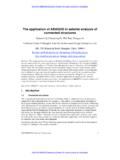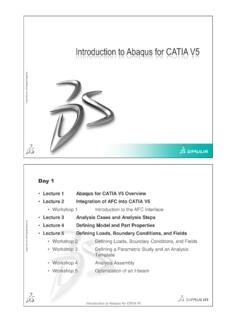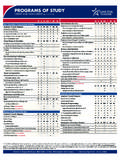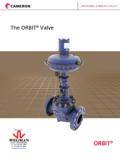Transcription of Automation of Elastomeric Gasket Cross Section Analysis ...
1 SIMULIA India Regional Users Meeting 11 Page 1 of 9 Automation of Elastomeric Gasket Cross Section Analysis using Abaqus Python Scripting Purushotham Kunduru, Manjunath M S Engineering Analysis group, Tata Consultancy Services Limited Abstract: Press in place (PIP) gaskets is widely used in automotive industry to seal various joints. These gaskets are made from Elastomeric (Hyper elastic) materials. Sealing performance of these gaskets is highly sensitive to the different material conditions linked to the manufacturing tolerance band of the Gasket and the groove.
2 Hence it requires a stochastic Analysis of the 2D Cross Section of the Gasket . The Standardized Analysis method is aimed at the sensitivity Analysis of various parameters that represent the sealing performance, integrity and characteristic namely Sealing Pressure (CPRESS) and nominal strain. The method also produces force-closure curves to be eventually used in the 3D system level Analysis . A transformational enhancement is presented in this paper to the incumbent method, which involved manual construction of 2D Cross sections pertaining to different material condition.
3 A Plug in developed using Abaqus Scripting Interface (ASI) completely automates the process of input files generation of each of the material condition and relevant results are reported into a text file post solution. The initiative resulted in a gross gain of 90% in the cycle time associated with this Analysis class. Keywords: Press in Place (PIP) gaskets , Groove, Powertrain, Elastomer, Hyper Elastic, Seals, Python, Graphic User Interface (GUI), Cycle time 1. Introduction Automotive systems in general and Powertain in particular is an assembly of various components and subsystems.
4 The major structural components of a Powertrain are the Engine Block, Engine Head, Bed plates/Main bearing caps, Cam Covers, Oil pan, Intake and the exhaust systems. The presence of fluids, air, fuel, exhaust gases, coolant and lubrication oil and hence the need to prevent leakage of these fluids, in majority of the above components present a major challenge for the assembly of these components into a system. The sealing integrity and durability at the junction of several of these components has a major bearing on the engine performance and durability.
5 SIMULIA India Regional Users Meeting 11 Page 2 of 9 There are many sealing solutions available from various suppliers, based mainly on the type of joint that is required to be sealed. Multi Layered Steel (MLS) gaskets are primarily used to seal junctions of components that experience high temperatures like the head block gaskets and exhaust system gaskets . Press in place gaskets with Elastomeric material are widely used to seal joints where extremely high temperature conditions do not exist. Room temperature vulcanisation (RTV) liquid sealants and rubber coated metal gaskets are some other class of sealing techniques that are seen in a Powertrain.
6 Edge bonded carrier gaskets and formed in place (FIP) gaskets complete the spectrum of sealing techniques used in the particular context of Powertrain. Elastomeric Materials Apart from the MLS and RCM gaskets used, Elastomeric gaskets find extensive application in Powertrain. These materials demonstrate viscoelastic behavior that can be generally characterized as low elastic modulus and higher yield strains. At room temperatures these materials are remarkably soft that makes them amenable for sealing applications that demand complex Cross Section geometries.
7 Elastomers are usually thermosets, but thermoplastic classes of elastomers are also available. Specifically to the automotive industry, over the years, elastomer like Neoprene is still the industry workhorse for underhood, chassis and adhesives. Even with today's broad selection of specialty elastomers, they remain the choice for many underhood and underbody parts that require a mid-performance polymer with a good all-around balance of performance properties. Used successfully in automotive hose applications, elastomers provides a cost effective approach to a wide range of challenging underhood applications, including power steering, engine and transmission oil cooler hoses, ignition cable, spark plug boots or primary wiring.
8 SIMULIA India Regional Users Meeting 11 Page 3 of 9 The pioneering fluoroelastomers produced by a number of suppliers across the world, has helped establish new standards for high performance automotive seals. With their excellent resistance to fuels, oils and fluids, combined with its exceptional heat resistance, continues to be the material of choice for demanding fuel system and Powertrain applications. Stochastic Analysis technique of 2D Gasket Cross Section Considering the high sensitivities of material behavior of Elastomeric gaskets to service temperatures, the sealing effectiveness studies on these components cannot be comprehensive and conclusive with traditional FE approach that takes into account nominal material conditions.
9 Hence an approach that arrives at the worst operating conditions taking into account the tolerance band specified by the supplier is more effective in leveraging simulation to drive the design of the gaskets . A well designed and benchmarked approach includes a two dimensional Cross Section Analysis of the Gasket and the groove that it fills to understand the sealing effectiveness. The parameters that are put on watch to assess the sealing performance is different for each material condition. The two dimensional Analysis sets individually lead to their respective system level Analysis that borrow pressure closure data of these gaskets for the corresponding material condition, from the Cross Section Analysis .
10 Need for Automation The Analysis technique presented above for the press in place gaskets presents themselves as a fit case for Automation of the CAE process. The Automation is necessary to accelerate the decision making process with regard to the worst operating condition for any sealed joint through the more economical and faster, two dimensional Cross Section Analysis , before embarking on computationally intensive 3D system Analysis . Considering the volumes of such Analysis within the team, varying from 100-150 a month, the need for Automation is immediate.











